This Article was published in the Martinez News-Gazette on 8/30/2017The day began at 9 AM with volunteers signing in at our Volunteer Booth, eager to begin! The mood was of excitement, wondering what might be discovered. Especially for one young man who has an interest in archaeology and made this his school project. Most volunteers were from Martinez, but some came as far away as San Ramon. It was a productive work day leaving no one disappointed. During the still cool and quiet morning, volunteers prepared the Chinese Funerary Burner location by clearing excess brush and weeds. Meanwhile, the Wallace's began the process of finishing Aaron Rice's headstone by reinforcing its small base with new cement. Throughout the peaceful morning and early afternoon, all you could hear was the sound of small manual tools chipping away old mortar from brick, while cyclists rode by and a few deer looked on. With steady hands and competent direction from Christian Rousset, work progressed smoothly. Local Chinese Historian, Sonia Ng, gave us the rich Chinese heritage background of honoring ancestors using an altar and funerary burner, which recharged our efforts. By the end of the day, Aaron’s new base was completed and two courses of brick removed. We discovered a major part of the burner’s foundation utilized brick joists\channels. As we stood there in awe, our imaginations took us to the late 1800s, early 1900s when Chinese laborers built this burner brick by brick. Our initial theory was they were created to save brick. However, upon further examination we realized they were a clever way to give flexibility to the foundation while also serving as water drainage. Special thanks to all of the volunteers who joined us Saturday: Lisa Adkisson, John Burgh, Dawn Curren, Carolyn Mac Kenzie, Sonia Ng, Christian Rousset, Karen and Ray Wallace, Bili and Matthew White, and Jennifer Wiseman. “Many hands make light work”, was never more true that day. For more pictures check out our Gallery.
Judie & Joseph Palmer are two of the founding members of the Martinez Cemetery Preservation Alliance (MCPA) and the Potter’s Field Project. Both have a passion for discovery, history, genealogy, anthropology and archaeology. For more info, please visit our website MartinezCemetery.org. Do you have a Potter’s Field story to tell? We welcome any pictures or information regarding the Alhambra Pioneer Cemetery or its Potter’s Field. Please email us at [email protected] or call us at (925) 316-6069. This Article was published in the Martinez News-Gazette on 7/30/2017By JOSEPH & JUDIE PALMER Special to the Gazette 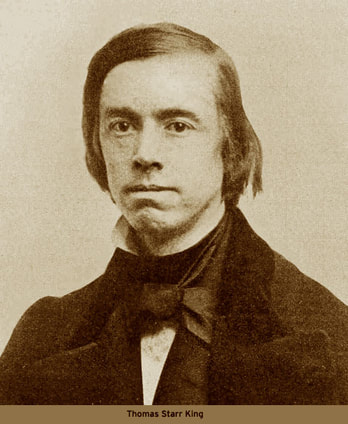 When last we wrote, in April of 1860 William Rice was searching for ranch land in Walnut Creek, while Aaron was tending to William’s farm in Napa. During this time, Rev. King, (whom we wrote about extensively in our last column), visits Aaron. The only account we have of Rev. King’s visit is from John Grider in Delilah L. Beasley’s 1819 book, The Negro Trail Blazers in California, “Rev. Thomas Starr King went to a ranch near Napa, California, and emancipated a number of slaves. Among the number were the following named persons: Aaron Rice, Old Man Sours, Wash Strains, Old Man Sydes. Their names were given to the writer by a Mr. Grider, who was a member of the Bear Flag Party. He said that these persons were the slave-property of a gentleman in Walnut Creek, and had been taken to Napa to continue as slaves, when the word reached Rev. Thomas Starr King, who proceeded to go to this place and emancipate them.” Whether Rev. King actually emancipated them or just informed the men of their rights is unknown. 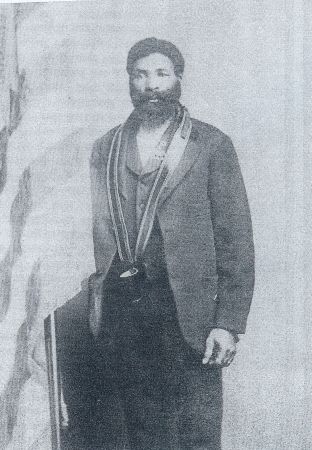 John Grider Courtesy of Sharon McGriff-Payne John Grider Courtesy of Sharon McGriff-Payne Mr. Grider on the other hand had received his own freedom earlier through mining. Delilah Beasley states, “Mr. John Grider came to California in 1841, with Major Barney, Dick Gardner, and Major Wyeth, owners of fine horses. They came from Silver County, Tennessee, through Mexico to California. He acted as horse trainer for the party. After reaching California, Mr. Grider decided to follow mining. He worked in the mines at Murphy’s Diggings, which was located seventy miles from Stockton. He was very successful and paid Major Wyeth $800 to bring his mother to California. Upon her arrival, he purchased her a home in Marysville, where Mrs. Caroline Grider spent the remaining days of her life. Mr. Grider has practiced as a veterinary surgeon in Vallejo almost continuously since 1851.” To give more understanding and context for what happens next for Aaron and his family, more information regarding this period is needed. Slaveholders like John Grider’s were rare. According to the National Humanities Center’s Toolbox Library, The Making of African American Identity: Volume 1 1500-1865, “Opportunities for most enslaved African Americans to attain freedom were few to none. Some were freed by their owners to honor a pledge, to grant a reward, or, before the 1700s, to fulfill a servitude agreement… Many ran away to free territory, and some of these "fugitives" succeeded in avoiding capture and forced to the South… A rare option was "self-purchase" (the term itself revealing the base illogic of slavery). In 1839 almost half (42%) of the free blacks in Cincinnati, Ohio, had bought their freedom and were striving to create new lives while searching for and purchasing their own relatives.” 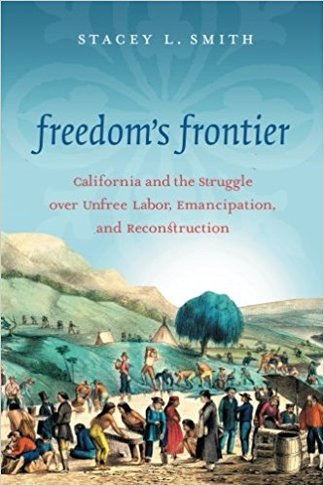 Courtesy © 2013 The University of North Carolina Press Courtesy © 2013 The University of North Carolina Press California’s Fugitive Slave Law of 1852 dramatically effected African-Americans. Charles Perkins had come to the gold mines of California on his father’s money and failed. With enough in his pocket for himself, he returned home to Mississippi without his three slaves in the spring of 1851. From BlackPast.org, historian Stacey L. Smith writes in her article, Pacific Bound: California’s 1852 Fugitive Slave Law, “Like other slaveholders who hoped to keep their bondpeople from running away in the mines, Charles Perkins struck an informal emancipation bargain with the men. If the three slaves worked faithfully for six months under the supervision of one of Perkins’s friends, they would earn their freedom. Accordingly, Perkins’s friend released the men in November of 1851.” 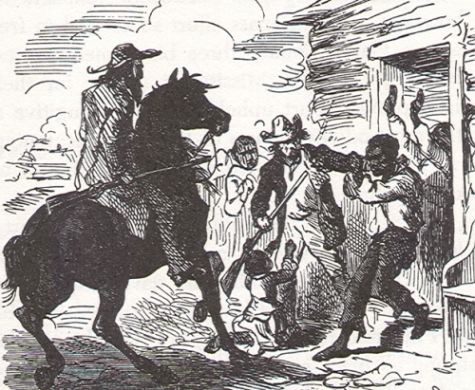 Capturing Fugitive Slaves circa 1856 Capturing Fugitive Slaves circa 1856 The three freed slaves began a business of their own and became very successful. Unfortunately, their freedom was short lived. During the night of April 31, 1852, Stacey writes, “While the three men slept, a group of armed whites broke into their cabin. The invaders tied up the black men, loaded them into their own wagon, and hauled them to Sacramento using their own mule team. There, a justice of the peace pronounced the men to be fugitive slaves and ordered their deportation back to the Slave South.” She continues, “Crabb and his southern-born allies in the proslavery branch of California’s Democratic Party pushed for a state fugitive slave law that would allow masters to hold the slaves who they had brought to California before statehood and take them back to the South. Any enslaved person who resisted this process would be criminalized as a fugitive slave.” 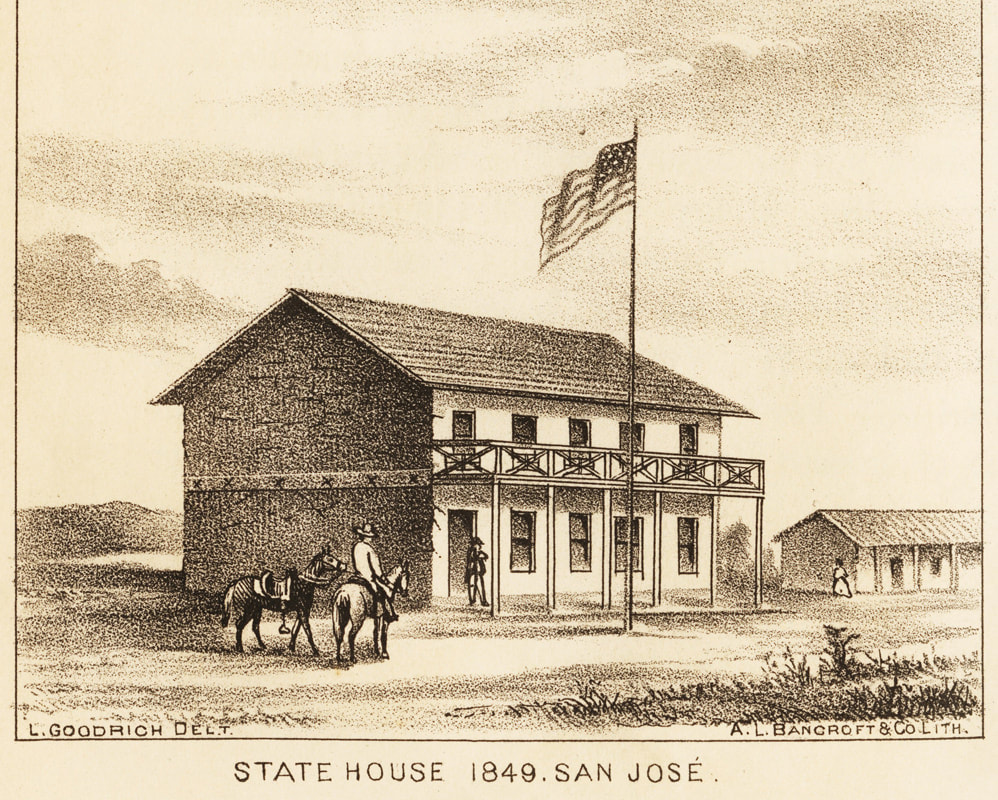 Courtesy California State Library Courtesy California State Library Crabb’s bill passed the assembly in 1852, but was challenged by northern senators in the senate. Smith writes, “Southern-born Democrats managed to outmaneuver Broderick and won moderates to their side by appending a “sunset clause” to the bill. This clause stipulated that masters would have only one year to claim their slaves and remove them from the state. They could not hold slave property in California indefinitely. Optimistic that the new law struck a careful balance between protecting slaveholder rights and preserving California’s antislavery constitution, moderates joined proslavery men in passing the law. It went into effect on April 15, 1852.” A small African-American community in Sacramento funded and hired a white lawyer to defend and release the three, but to no avail. Beasley writes, “California Reports, No. 2, p. 424: “By the set of April 20, 1852, the power of hearing and determining writ of habeas corpus is vested in the Judge of every court of record in the State. The final determination is not that of a court, but the simple order of a Judge, and is not appealable from or subject to review.”” 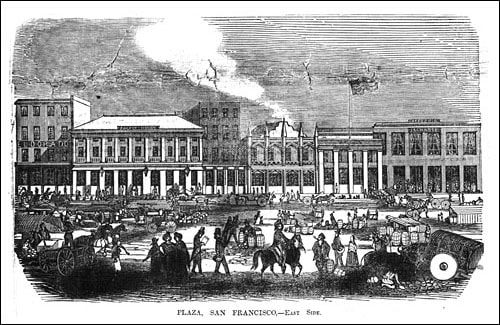 California Supreme Court SF (1852-1853) Courtesy of the CSCHS California Supreme Court SF (1852-1853) Courtesy of the CSCHS Smith writes, “Once the men got their day in court, a proslavery mob intimidated the presiding judge and he found in favor of the slaveholder. With financial backing from free African Americans, Cole and his colleagues appealed to the California Supreme Court… Hugh C. Murray of Missouri and Alexander Anderson of Tennessee, the two justices who presided over the case of In re Perkins were southern-born Democrats. They ruled that the fugitive slave law was, in fact, constitutional… The court found in favor of the slaveholder. Perkins’s agents took custody of the men and departed for Mississippi.” 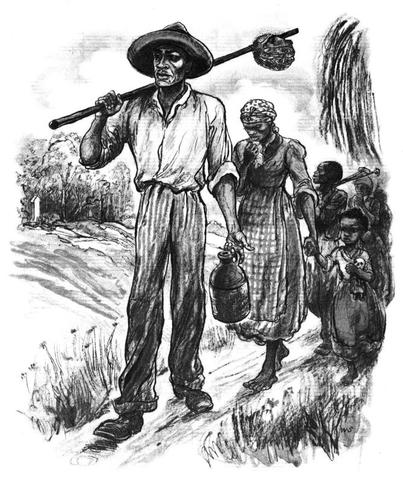 Fugitive Slave Family Walking Fugitive Slave Family Walking Smith finishes, “Even free African Americans could easily fall victim to kidnapping and fraud because California’s black codes prohibited them from testifying against whites in state courts. Most importantly, the law’s sunset clause proved malleable in the hands of proslavery politicians. In 1853, and again in 1854, the state legislature voted to extend the fugitive slave law another year. Slaveholders had until the spring of 1855 to claim and remove their slaves, making enslaved people vulnerable to deportation five or six years after most had arrived on California soil. Newspapers reported stories of nearly two dozen slaves arrested and sent back to the South between 1852 and 1855. Even after the lapse of the fugitive slave law in 1855, masters informally held slaves in California until 1864.” Aaron would have heard about this case and others like it and therefor carefully considered his choices and their potential impact on his family and himself. The other three men it is safe to assume fled as no later record of them can be found. Aaron and his family chose freedom, and to fight back. However Nathaniel (Aaron’s oldest son) was still entrapped by William.
Special Thanks to Historians and Authors: Stacey L. Smith, Sharon McGriff-Payne, Alexandria Brown who graciously gave generously of their time and research to insure the accuracy of Aaron's and his families story. Thanks also to BlackPast.org, the California State Library, the California Supreme Court Historical Society, Starr King School for the Ministry, The University of North Carolina Press, for their generous contributions. Judie & Joseph Palmer are two of the founding members of the Martinez Cemetery Preservation Alliance (MCPA) and the Potter’s Field Project. Both have a passion for discovery, history, genealogy, anthropology and archaeology. For more info, please visit our website MartinezCemetery.org. Do you have a Potter’s Field story to tell? We welcome any pictures or information regarding the Alhambra Pioneer Cemetery or its Potter’s Field. Please email us at [email protected] or call us at (925) 316-6069. Alhambra Cemetery Potter's Field, Martinez (Bottom of Hill) Saturdays: Aug 26, Sep 16, Sep 30 9 am - 2 pm Sponsors: Martinez Historical Society - Potter's Field Restoration Project, SOLS Break out your inner archaeologist, or Indiana Jones Adventurer and help clean and excavate the Chinese-American Funerary Burner in Potter's Field. Be part of the potential discovery of an older and very rare earlier version underneath. Work with Sean Dexter from Condor Country Consulting our resident Archaeologist & Christian Rousset our Project Manager and master craftsman. Tasks: 1) Deconstruct Chinese-American Funerary Burner; 2) Clean bricks of old mortar; 3) Uncover potential remnants of earlier Burner. Refreshments, Water, First Aid, Bug Spray & Suntan Lotion generously provided by SOLS. Wear comfortable clothes, a pair of gloves & protective eye-wear. If you have any tools that you feel could be useful for removing old mortar from brick, please bring them. Otherwise tools will be provided. Besides our cemetery cleanups, we are engaged in ongoing research to uncover the genealogy of the residents of Potter's Field. By using County records, City of Martinez's decedent lists, information from the few existing headstones, vital records, past newspapers and more we are discovering the lost history of Martinez and California's origins. For further information, donations or to volunteer:
Please contact: Joseph Palmer, Potter's Field Restoration Project Coordinator Phone: (925) 316-6069 Email: [email protected] This Article was published in the Martinez News-Gazette on 7/30/2017By JOSEPH & JUDIE PALMER Special to the Gazette When last we wrote, William Rice had brought Aaron and his family with him to Napa by early 1860, when he then purchased land from longtime friend and ex Gov. Lilburn Boggs, of Missouri. His family resided at 720 Seminary Street, (the home of another former Missourian Major John H. Seawell) while Aaron and his family were most likely regulated to small cabins on Boggs’s property. After William oversaw the seeding of his land, he left Aaron, Aaron’s family, and other enslaved individuals to work his farm while he set out to find a permanent location for his new ranch. Before we can continue with their story, some early California history is needed for context. 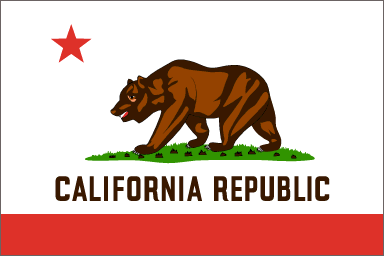 Official State Flag of California, Adopted 1911 Official State Flag of California, Adopted 1911 California became a Free State on September 9, 1850, and yet many were still entrapped. Before California was admitted into the Union, discussion regarding its impending status as either “Free”, “Slave”, or splitting in two was highly contentious. The Californian of March 15, 1848 wrote, “We entertain several reasons why slavery should not be introduced here. First, it is wrong for it to exist anywhere. Second, not a single instance of precedence exists at present in the shape of physical bondage of our fellow men. Third, there is no excuse whatever for its introduction into this country (by virtue of climate or physical conditions). Fourth, Negroes have equal rights to life, liberty, health and happiness with the whites. Fifth, it is every individual’s duty, to self and to society, to be occupied in useful employment sufficient to gain self-support. Sixth, it would be the greatest calamity that the power of the United States could inflict upon California. Seventh, we desire only a white population in California. Eighth, we left the slave states because we did not like to bring up a family in a miserable, can’t-help-one’s-self condition. Ninth, in conclusion we dearly love the ‘Union,’ but declare our positive preference for an independent condition of California to the establishment of any degree of slavery, or even the importation of free blacks.” Although The Californian was thought to represent the many moderate and intelligent voices of the state, the Seventh and Ninth points are very revealing of its white supremacy streak. 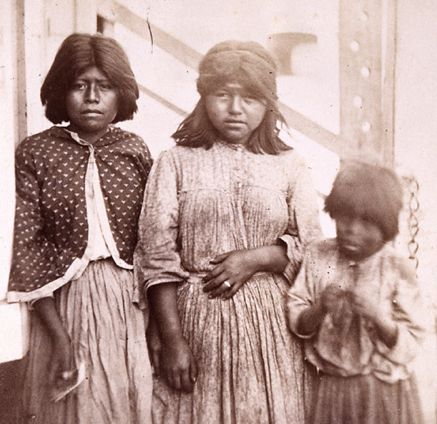 Native American Slaves 1863 California (Courtesy of Blog US Slave) Native American Slaves 1863 California (Courtesy of Blog US Slave) From the PBS KED program, New Perspectives On The West, “1850 California enters the Union. With miners flooding the hillsides and devastating the land, California’s Indians find themselves deprived of their traditional food sources and forced by hunger to raid the mining towns and other white settlements. Miners retaliated by hunting Indians down and brutally abusing them. The California legislature responds to the situation with an Indentured Act which establishes a form of legal slavery for the native peoples of the state by allowing whites to declare them vagrant and auction off their services for up to four months. The law also permits whites to indenture Indian children, with the permission of a parent or friend, and leads to widespread kidnapping of Indian children, who are then sold as “apprentices.”” 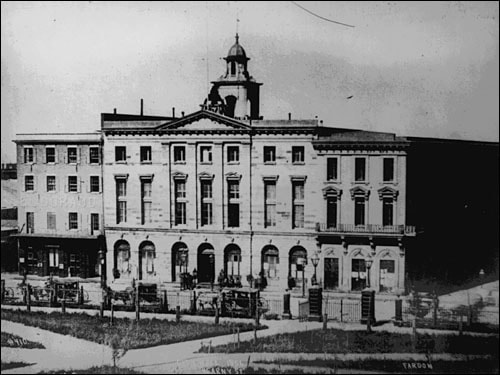 CA Supreme Court, 1853-54 San Francisco (Courtesy CA Supreme Court Historical Society) CA Supreme Court, 1853-54 San Francisco (Courtesy CA Supreme Court Historical Society) In People vs. Hall, the California Supreme Court ruled in 1854 that the testimony of Chinese men who witnessed the murder of Ling Sing, a Chinese miner, by George Hall was inadmissible. It stated, “The appellant, a free white citizen of this State, was convicted of murder upon the testimony of Chinese witnesses…The 394th section of the Act Concerning Civil Cases provides that no Indian or Negro shall be allowed to testify as a witness in any action or å proceeding in which a white person is a party. The 14th section of the Act of April 16th, 1850, regulating Criminal Proceedings, provides that “No black or mulatto person, or Indian, shall be allowed to give evidence in favor of, or against a white man.” …We are of the opinion that the words “white,” “Negro,” “mulatto,” “Indian,” and “black person,” wherever they occur in our Constitution and laws, must be taken in their generic sense, and that, even admitting the Indian of this continent is not of the Mongolian type, that the words “black person,” in the 14th section, must be taken as contradistinguished from white, and necessary excludes all races other than the Caucasian… For these reasons, we are of opinion that the testimony was inadmissible. The judgment is reversed and the cause remanded.” A reading of the entire ruling reveals the truly vile racist mindset of the court and the state. Not until 1873 did California pass a law invalidating all previous testimony laws. 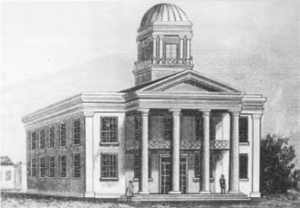 An illustration of the first Sacramento Capital Building of 1854 from the California State Library. (COURTESY/On File ) An illustration of the first Sacramento Capital Building of 1854 from the California State Library. (COURTESY/On File ) Prior to 1860, California was on the verge of becoming a Slave State as the legislature and Governor where controlled by the pro southern\slavery wing of the Democratic Party. However, the 1860 election changed everything as the abolitionist movement gained enough power within California’s parties to prevent secession to the confederacy, and elected Abraham Lincoln President. 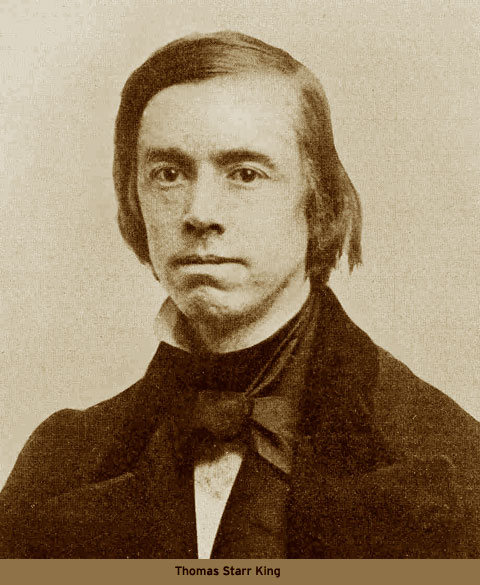 Rev. Thomas Starr King (Courtesy Starr King School for Ministry) Rev. Thomas Starr King (Courtesy Starr King School for Ministry) Albert S. Broussard in his work, Civil Rights, Racial Protest, And Anti-slavery Activism in San Francisco, 1850-1865, writes about the abolitionists, Rev. Thomas Starr King, and Jessie Fremont (the wife of John C. Fremont, the Republican candidate for president in 1856), “These individuals congregated intermittedly at the San Francisco home of Jessie Fremont, known as Porter’s Lodge. …Jessie Fremont, according to one writer, established “San Francisco’s first literary and political salon.” Rev. King was a highly sought after abolitionist from New England who fielded numerous plum offers from around the country. Broussard continues, “King, a transplanted New Yorker, migrated to San Francisco in 1859, and served as pastor of the Unitarian Church in San Francisco. Because of his liberal views and the power and uncompromising tenor of his oratory, King immediately became a highly respected figure in San Francisco’s African American community. He was fervently antislavery, a fact that he made no attempt to disguise.” With his great power of oratory, he traveled the state extensively to convince citizens to support the Union. He was credited as, “the orator who saved the nation” and President Lincoln stated he “single-handedly kept California in the Union.” Due to his tireless efforts for God and Country, he contracted diphtheria and pneumonia from exhaustion and died on March 4, 1864. 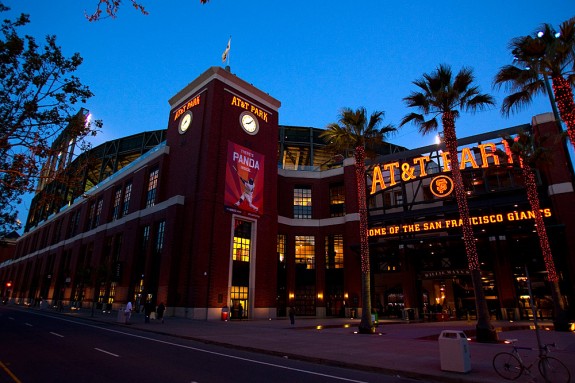 AT&T Park, King Street San Franciso (Courtesy of Mangin Photography) AT&T Park, King Street San Franciso (Courtesy of Mangin Photography) He is one of the very few individuals to remain interred in San Francisco, while also having two streets named after him, King St. and Starr King Way. Rev. King also raised funds for flood and drought relief in Northern California, and worked for the rights of enslaved Americans. In April of 1860, he intervenes on behalf of Aaron Rice and his family to free them from William…. Judie & Joseph Palmer are two of the founding members of the Martinez Cemetery Preservation Alliance (MCPA) and the Potter’s Field Project. Both have a passion for discovery, history, genealogy, anthropology and archaeology. For more info, please visit our website MartinezCemetery.org. Do you have a Potter’s Field story to tell? We welcome any pictures or information regarding the Alhambra Pioneer Cemetery or its Potter’s Field. Please email us at [email protected] or call us at (925) 316-6069. |
AuthorsJudie & Joseph Palmer are two of the founding members of the Martinez Cemetery Preservation Alliance (MCPA) and the Potter’s Field Project. Both have a passion for discovery, history, genealogy, anthropology and archaeology. Archives
October 2021
Categories |

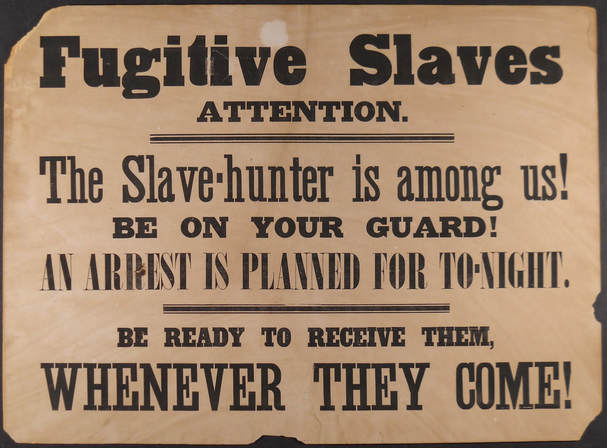
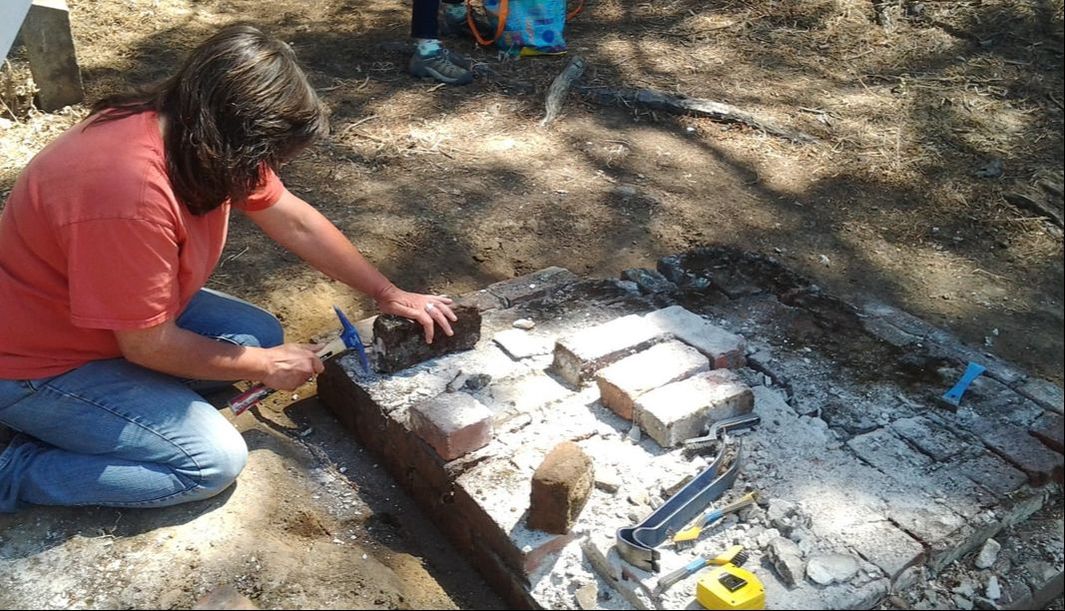
 RSS Feed
RSS Feed